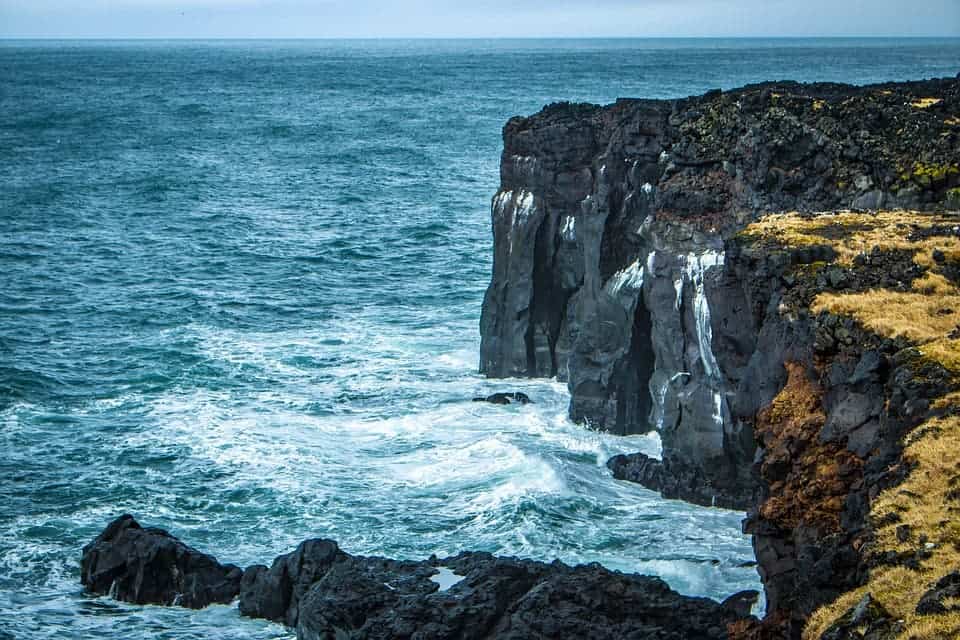Greenland may actually be green by the end of the millennium if greenhouse emissions continue unabated.
New research shows that, if greenhouse gas emissions continue on their current trajectory, Greenland could lose 4.5% of its ice by the end of the century, and all of it by the year 3000. That 4.5% loss of ice is equivalent to roughly 13 inches of sea level rise, the team explains.
Actually Green land
“How Greenland will look in the future — in a couple of hundred years or in 1,000 years — whether there will be Greenland, or at least a Greenland similar to today, it’s up to us,” said first author Andy Aschwanden, a research associate professor at the University of Alaska Fairbanks Geophysical Institute.
Greenland houses a lot of ice — around 660,000 square miles of solid ice sheet, which contains around 8% of all the planet’s fresh water. Between 1991 and 2015, melting here has added about 0.02 inches per year to the sea level. Needless to say, we need to know how all that ice is faring and whether there’s any cause for concern. Turns out that there is.
The team used recent topography (landscape) data of Greenland’s terrain today to model how its ice sheets will evolve in the future. This data was recorded by a NASA airborne science campaign (Operation IceBridge) during which aircraft fitted with a full suite of scientific instruments scanned Greenland’s ice sheets recording its surface, the individual layers within, and the shape of the bedrock. On average, Greenland’s ice sheet is 1.6 miles thick, but there was a lot of variation.
A wide range of scenarios concerning ice loss and changes in sea level are possible based on how greenhouse gas concentrations and atmospheric conditions evolve. The team ran 500 simulations for each emission scenario using the Parallel Ice Sheet Model, developed at the Geophysical Institute, to create a picture of how Greenland’s ice would respond to different climate conditions. The model included parameters on ocean and atmospheric conditions as well as ice geometry, flow, and thickness.
Under a business as usual scenario, we could see around 24 feet to global sea level rise by the year 3000 due to melting in Greenland alone — which would put much of San Francisco, Los Angeles, New Orleans and other cities under water. However, if we do manage to slash greenhouse gas emissions significantly, the prospects improve. Reduced emission scenarios showed between 8% to 25% melting of Greenland’s ice, which would lead to approximately 6.5 feet of sea level rise
Projections for both the end of the century and 2200 tell a similar story. A wide range of outcomes are possible, including saving the ice sheet, but it all depends on emission levels, the team explains.
The team explains that modeling ice sheet behavior is tricky because ice loss is primarily driven by the retreat of outlet glaciers. These are the glaciers at the margin of the ice sheets, and they ‘drain’ ice from deeper in the sheets through through-like structures in the bedrock. This study was the first to include these outlet glaciers in its modeling and found that their discharge could contribute as much as 45% of the total mass of ice loss in Greenland by 2200. Outlet glaciers come into contact with water, the team explains, which makes ice melt much faster than air. The more ice that comes into contact with water, the faster the rate of melting — which creates a feedback loop that dramatically affects the ice sheet’s stability.
Previous research lacked data as comprehensive as that recorded by IceBridge, so it couldn’t simulate the ice sheets’ evolution in such detail.
“Ice is in very remote locations,” says Mark Fahnestock, a researcher at the University of Alaska Fairbanks Geophysical Institute and paper co-author. “You can go there and make localized measurements. But the view from space and the view from airborne campaigns, like IceBridge, has just fundamentally transformed our ability to make a model to mimic those changes.”
“What we know from the last two decades of just watching Greenland is not because we were geniuses and figured it out, but because we just saw it happen,” he adds. As for what we will see in the future, “it depends on what we are going to do next.”
The paper “Contribution of the Greenland Ice Sheet to sea level over the next millennium” has been published in the journal Science Advances.










